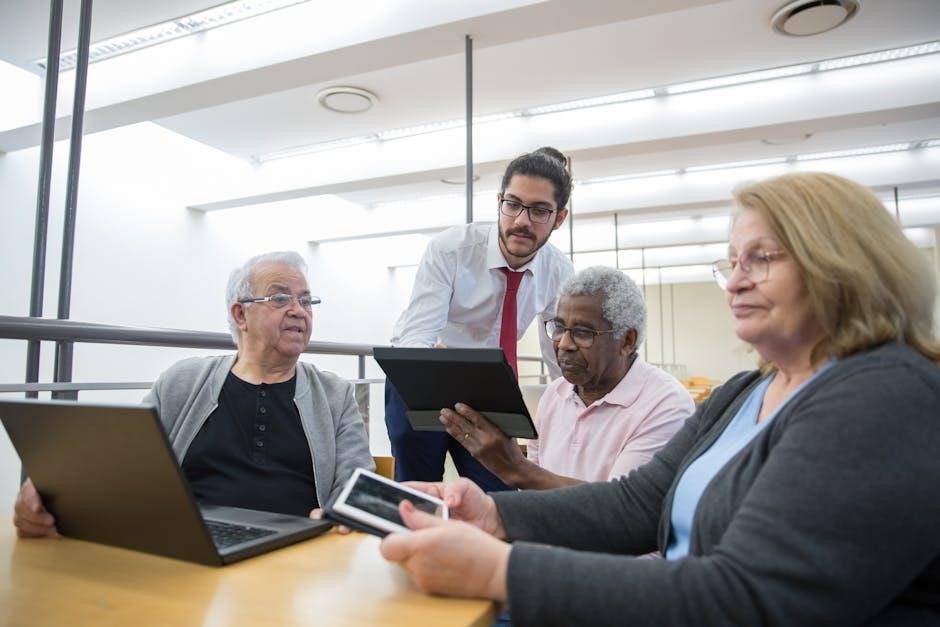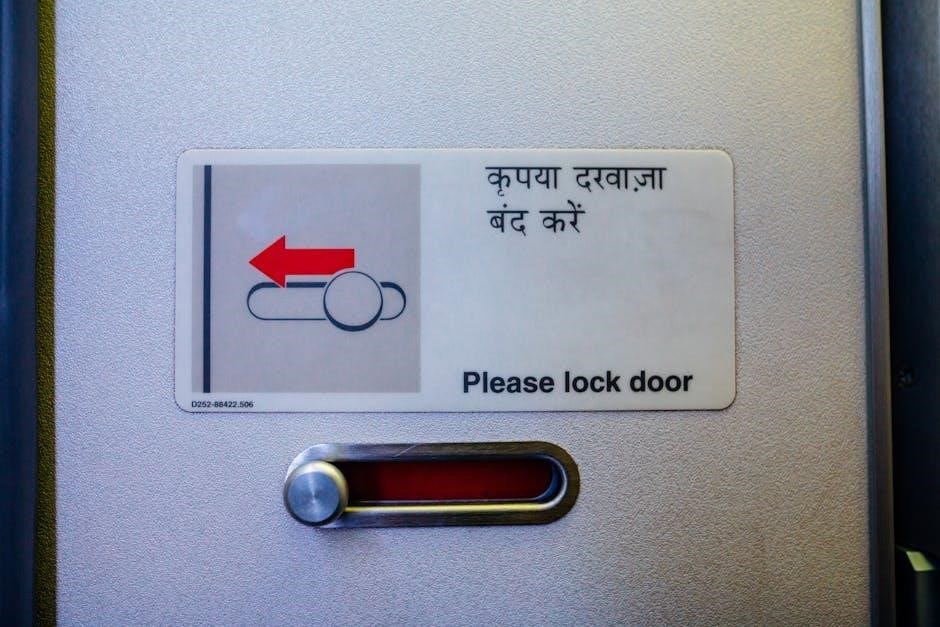Specially Designed Instruction (SDI) refers to tailored teaching methods that address individual student needs through personalized learning strategies․ It plays a crucial role in special education by providing adaptable approaches that cater to diverse learners, ensuring they meet educational goals effectively․
1․1 Definition and Overview

Specially Designed Instruction (SDI) involves tailored teaching strategies that address the unique needs of students, particularly those with disabilities․ It is defined as instruction that adapts content, methods, or delivery to ensure students access and progress within their educational programs․ SDI is rooted in Individualized Education Programs (IEPs) or 504 plans, ensuring a personalized approach to learning․ Unlike general education, SDI focuses on specific skills or concepts, often using specialized tools, technologies, or techniques․ It emphasizes measurable goals, ongoing assessment, and collaboration among educators․ By providing targeted support, SDI helps students overcome barriers and achieve academic success, fostering an inclusive and equitable learning environment․
1․2 Importance of Specially Designed Instruction (SDI)
Specially Designed Instruction (SDI) is essential for addressing the diverse learning needs of students, particularly those with disabilities․ It ensures that students have access to the curriculum and can make meaningful progress toward their educational goals․ SDI is not a one-size-fits-all approach; it is tailored to meet the unique requirements of each student, making it highly effective․ By providing targeted support, SDI helps students overcome learning barriers, build foundational skills, and develop independence․ It also fosters inclusivity by creating learning environments that value diversity and promote equity․ Ultimately, SDI plays a critical role in ensuring that all students, regardless of their abilities, have the opportunity to succeed and thrive in their educational journeys․

Understanding Specially Designed Instruction Examples
Specially Designed Instruction (SDI) examples are teaching strategies tailored to meet individual student needs, ensuring accessibility and engagement․ They bridge the gap between general education and specialized support, making learning adaptable and effective for diverse learners․
2․1 What Are Specially Designed Instruction Examples?
Specially Designed Instruction (SDI) examples are tailored teaching strategies and methods designed to meet the unique needs of individual students, particularly those with disabilities․ These examples are developed to ensure that students can access and engage with the curriculum in meaningful ways․ SDI examples often include accommodations, modifications, and interventions that address specific learning barriers, such as visual aids for visual learners or assistive technology for students with physical disabilities․ They are adaptable and can be adjusted based on student responses and progress․ By providing personalized support, SDI examples help educators create inclusive learning environments that foster academic success and independence for all students․
2․2 Key Characteristics of Effective SDI Examples
Effective Specially Designed Instruction (SDI) examples are characterized by their ability to meet individual student needs through tailored approaches․ They are aligned with learning goals, ensuring relevance and focus․ SDI examples are data-driven, using assessments to inform instruction and measure progress․ They also incorporate universal design principles, making learning accessible from the start․ Additionally, effective SDI examples are flexible and adaptable, allowing adjustments based on student responses․ They often involve collaboration among educators, families, and specialists to ensure comprehensive support․ Finally, they emphasize explicit instruction and scaffolding to build skills systematically․ These characteristics ensure that SDI examples are both impactful and sustainable in fostering student success․

Examples of Specially Designed Instruction in Practice
Specially Designed Instruction is applied in various educational settings, addressing diverse learning needs such as autism, dyslexia, physical disabilities, and sensory impairments through tailored strategies․

3․1 Instructional Strategies for Different Learning Needs
Specially Designed Instruction tailors strategies to meet diverse learning needs․ For visual learners, educators use charts, diagrams, and videos․ Auditory learners benefit from lectures, audiobooks, and discussions․ Kinesthetic learners thrive with hands-on activities and simulations․ For students with physical disabilities, adaptive tools and assistive technologies are essential․ Those with cognitive challenges may require simplified instructions, visual schedules, and frequent breaks․ Multi-sensory approaches integrate visual, auditory, and tactile methods to engage various learning styles․ Additionally, collaborative learning and peer support foster inclusive environments․ These strategies ensure that instruction is accessible, engaging, and aligned with individual learning requirements, promoting academic success and independence for all students;
3․2 Real-World Applications of SDI in Education
Specially Designed Instruction is widely applied in classrooms to support diverse learners․ For example, in math, teachers use manipulatives for tactile learning, while in reading, phonics-based programs help students with dyslexia․ Assistive technologies, like text-to-speech software, enable students with visual impairments to access materials independently․ Collaborative learning tools, such as group projects and peer tutoring, foster social skills and shared understanding․ Additionally, personalized learning plans (PLPs) are tailored to individual goals, incorporating multisensory approaches and adaptive assessments․ These real-world applications ensure that SDI is practical, effective, and transformative, helping students with varying needs achieve their full potential in inclusive educational settings․

Creating Your Own Specially Designed Instruction Examples
Developing Specially Designed Instruction involves creating personalized strategies tailored to student needs, ensuring alignment with IEP goals and educational standards for effective and measurable outcomes․
4․1 Step-by-Step Guide to Developing SDI Examples
Creating Specially Designed Instruction examples involves a structured approach to meet individual learner needs․ Start by identifying the student’s specific requirements and aligning goals with their IEP․ Next, select evidence-based instructional strategies that cater to their learning style․ Develop clear, measurable objectives and design activities that integrate accommodations and modifications․ Implement the instruction, monitor progress, and adjust strategies as needed․ Document outcomes to assess effectiveness and refine future examples․ Collaboration with educators and parents ensures comprehensive support․ This systematic process guarantees personalized, impactful learning experiences tailored to diverse student needs, fostering academic and skill development effectively․ Consistent assessment and adaptation are key to successful SDI implementation․
4․2 Tools and Resources for Designing Effective SDI
Designing effective Specially Designed Instruction requires access to the right tools and resources․ Educators can utilize educational software, assistive technologies, and online platforms to create personalized learning experiences․ Instructional strategies such as scaffolding, differentiated instruction, and Universal Design for Learning (UDL) provide frameworks for tailoring lessons․ Collaboration tools like IEP management systems and communication apps enhance teamwork among educators, parents, and students; Additionally, curriculum design templates, progress monitoring tools, and professional development resources support the creation of robust SDI examples․ Leveraging these tools ensures that instruction is both effective and adaptable, meeting the diverse needs of learners in a structured and impactful manner․

Challenges and Solutions in Implementing SDI

Implementing SDI often faces challenges like limited resources and teacher training gaps․ Solutions include professional development, collaboration, and leveraging technology to support tailored instruction effectively․
5․1 Common Challenges Faced by Educators
Educators often face challenges such as limited time to develop individualized plans, lack of specialized training, and insufficient resources․ Additionally, balancing diverse student needs, managing progress monitoring, and collaborating effectively with support staff can be daunting․ Limited access to technology and curriculum materials tailored for specific learning requirements further complicates implementation․ High caseloads and paperwork demands also reduce the time available for instruction․ These barriers highlight the need for systemic support and professional development to ensure educators can effectively deliver specially designed instruction․
5․2 Best Practices to Overcome Implementation Hurdles

To overcome challenges, educators should prioritize ongoing professional development to enhance their skills in designing and delivering SDI․ Leveraging technology, such as educational software and digital tools, can streamline instruction and monitoring․ Building strong collaboration with support staff, administrators, and families ensures a cohesive approach․ Implementing data-driven decision-making helps track student progress and refine strategies․ Simplifying documentation processes and utilizing pre-designed templates can reduce administrative burdens․ Additionally, fostering a culture of flexibility and adaptability allows educators to adjust methods based on student responses․ Finally, recognizing and celebrating successes, no matter how small, can motivate educators to continue refining their practices․
Specially Designed Instruction examples are vital for meeting diverse learner needs․ Future advancements in technology and research will further enhance their effectiveness and accessibility in education․
6․1 The Evolving Role of SDI in Education
The role of Specially Designed Instruction (SDI) in education is continually evolving, driven by advancements in technology, research, and inclusive learning practices․ As educators gain deeper insights into diverse learning needs, SDI strategies are becoming more personalized and adaptive․ The integration of digital tools, such as AI-driven platforms and data analytics, enables real-time monitoring of student progress, allowing for more dynamic adjustments to instruction․ Additionally, there is a growing emphasis on collaboration between educators, families, and community organizations to create holistic learning environments․ These developments underscore SDI’s critical role in fostering equity and ensuring all students can achieve their full potential in an ever-changing educational landscape․
